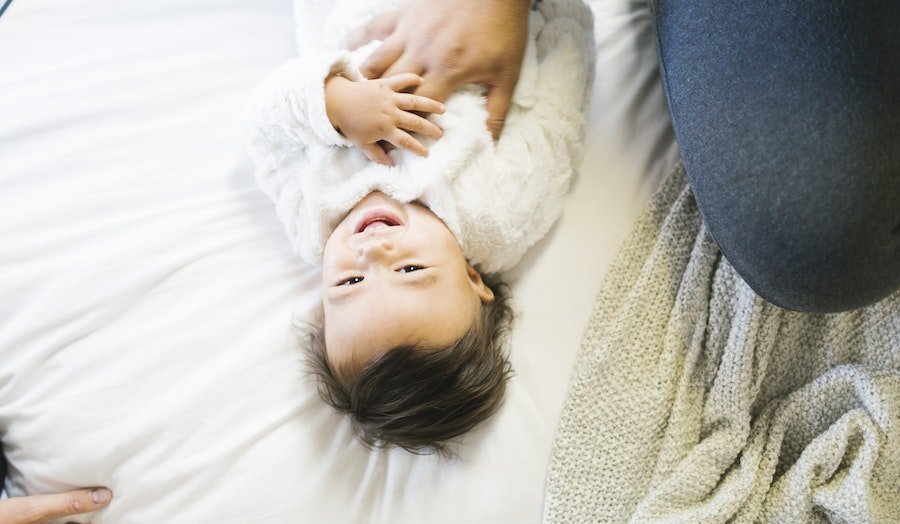FREE STANDARD SHIPPING, ALWAYS

Ways to Raise a Kind & Respectful Child - Teach Kindness to Kids
R-E-S-P-E-C-T, find out how to teach it to your kiddos!
Posted 6/21/2023

Family
Teaching kindness to kids isn’t as obvious as teaching them how to say goodbye to velcro and tie their own shoes. Kindness isn’t just being polite — it also includes teaching kids how to show respect, what the meaning of equality is, and how to become a champion for diversity and inclusion. If you’re not sure how, or when, to start incorporating little lessons into your children’s everyday life, try these 10 helpful tips for easy ways to raise a kind and respectful child.
And as your little one grows into a sweet, good-natured human, capture those moments for them—and you!—to look back on. Even if you’re raising a kind kiddo, take photos of the temper tantrums, the hide-n-seek spots and milestones. Each moment is worth snapping and saving, especially when your toddler is suddenly a teenager with an assortment of passions and headphones that seem to be glued to their ears. Don’t let those photos get lost in your phone, print them in a photo book so no Kindergarten graduation, lost tooth or spilled milk is ever truly forgotten.
Explain Kindness and Compassion
Your children’s ability to grasp the concept of kindness will grow as they do, but it’s never too early to start discussing kindness with your kids and showing them real-world examples. Around ages 3 and up, you can center conversations around treating others the way “you” want to be treated to help your little ones understand. For instance, you can explain, “You wouldn’t want anyone to make fun of your shoes, so you shouldn’t tease your brother about his shoes,” and use that moment as a learning experience for them.
This is also a great moment to tie in topics like equality, diversity and inclusion in your conversation. Outside of your home, your children will be introduced to other kids and adults from different backgrounds, and kindness goes hand in hand with embracing our differences.
Show, Don’t Tell
Parents will never be perfect role models, but doing your best to set good examples of kindness for your children is just as important as discussing it. In fact, just talking to your kids about kindness doesn’t typically work, you have to show them. “In order to be kind, you have to experience it at home,” Mary Gordon, founder and president of K-8 classroom program Roots of Empathy, tells TODAY.
It’s important to show your spouse, children and other friends and family members kindness, since you are your children’s greatest example. Try to take a deep breath, or pause for a moment before you speak. And remember to be kind to yourself, as well, and show yourself grace in stressful or difficult situations. Whether that means taking a long bath, seeking professional counseling or changing the way you speak about yourself. This is behavior your children will also pick up on, and model themselves.
Encourage Compassion and Respect Toward Others
Kindness comes in many forms, from holding open a door for a stranger to allowing a mother with fussy children to cut you in line at the grocery store. Kids absorb so much, including how their parents treat family, friends, neighbors and strangers. Acts of kindness range from volunteering for a local charity to greeting a new neighbor with a gift. "We can't control their behavior, but we can look for ways to demonstrate kind behavior ourselves,” psychiatrist Kelli Harding, MD, explains to Parents.
While Kindness Is the Right Thing, It’s Not Always the Easy Thing
The truth is, kindness isn’t always easy, and this can be a difficult concept to explain to your kids. It can be hard to do the right thing, or stand up for someone, when everyone else is doing the opposite. It can be difficult to show your little brother kindness when he’s stealing all your LEGOs and hiding them in his sock drawer.
Apologizing isn’t easy, either, but oftentimes, it’s the kind thing to do. "It doesn't always flow out of you naturally—but that doesn't mean that you're not kind,” author Carla Naumburg, Ph.D., tells Parents. Explain to your child what the other person in the situation may be feeling, and encourage them to express their apologies. "Kindness really is like a muscle," Dr. Naumburg says. "The more you practice saying kind things, the easier it's going to be when it's hard."
Ask Questions That Encourage Compassion
To encourage kind behavior, start by asking questions that will help you children recognize situations that could use some compassion and respect. Toddlers are learning all about their emotions—and learning that others have them, too. Try asking these questions, and following up by asking what emotions your little one associates with each situation.
- How does it feel when someone is kind to you?
- How can you be kind to your family members and friends?
- How can you include others in school, at the park, etc.?
Give Your Kids the Language They Need
If you want your kids to be kind, they’re going to need the right words to express themselves. From “I’m sorry,” when they need to apologize to “You can sit with me,” in the lunchroom, there’s a multitude of situations where kindness can be used. And while you can’t prepare exact wording for them all, the ability to learn the language they need comes from encouraging them to ask the right questions.
It’s important to give your kids another perspective to consider, which can come from asking them questions like, “how do you think that makes them feel?” and “how would you feel if you were in their position?” These kinds of exercises can lead to a multitude of examples where you and your kids can walk through the most compassionate way to speak.
Weave a Web of Kindness
Kindness doesn’t have to always be wholly altruistic. Weaving seeds of kindness, from your home and office to the dry cleaners and Starbucks, has many benefits. People will remember your kindness and compassion, the way you conduct yourself, and their gratitude can have benefits. The easiest way to explain it to your little ones is like this: Kindness makes people happy, and they may return your kindness and make you happy, as well.
From saying “thank you” to paying it forward in the coffee line in the morning, showing your kids what kindness can do, how it creates a web that affects everyone, can make a great feeling. And, yes, so are the rewards!
Get Out of Your Comfort Zone
For little ones, the park, swim class and preschool are the perfect opportunity to meet new people from different walks of life. They’re going to meet all different types of kids and adults and experience a slew of new situations—and the many emotions that come with them. Meeting new people is one of the best ways to expand their minds and truly put “how would you feel in their shoes?” to the test. Now, they have a multitude of other “shoes” or emotions to learn from. Saying goodbye to their comfort zone is a wonderful way to dive right into the deep end of empathy and compassion.
Small Rewards Go a Long Way
You don’t need to reward your children for every small act of kindness along the way (like chores or opening the door), but acknowledging “uncommon acts of kindness,” like donating something they love to charity or going out of their way to help someone, with a reward can be a great idea, says to Richard Weissbourd, who runs the Making Caring Common project. “That everyday kindness should be expected,” he tells TODAY. “That’s how it becomes part of who we are, part of our identity.”
Kindness Has Its Limits
While taking the high road and showing empathy and compassion are important, sometimes kindness has its limits. This may be a topic that’s hard to explain to your little ones, but talking about when they no longer need to be kind, but politely and firmly hold onto their boundaries, is also important. This type of situation can occur with strangers (for instance, you don’t need to do everything a stranger tells you, like getting into their car), or when dealing with bullies at school. It’s up to every parent to use their best judgment for their child, but explaining the limits of kindness is also important to your child’s well-being.
While teaching kindness to kids may not be the easiest thing to do, remember that leading with a kind, respectful and compassionate example is the best way to teach your children. Kindness isn’t just for friends and family, outside the home it goes hand in hand with equality, diversity and inclusion. Teaching kids respect can begin at any age, and before you know it, your little one will be a fully grown adult, capable of so much kindness and compassion.
Remember to snap every moment, from that first night at home to the last night before college. Don’t let those photos get lost in your phone, print them in a photo book so no waterpark adventure or school project is ever forgotten.
Readers are loving

60+ Sweet New Baby Quotes

35 Best Parenting Quotes That Perfectly Sum Up Family Life

32 Happy Anniversary Messages That Will Make You Fall in Love All Over Again